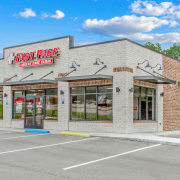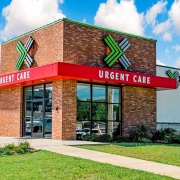Reflecting on one year into the COVID-19 pandemic in the United States, we’ve seen an acceleration of the medical sector’s already-booming market outlook, especially as it relates to urgent care facilities. Even before the pandemic, medical clinics were progressively popping up in retail strips and main shopping centers, and around busy commercial offices. Investors are seeking urgent care real estate as a growing sector with stable vehicles to safely invest their money.
Pre-pandemic urgent care facilities were primarily serving the general public for urgent and immediate care needs—however, in a post-pandemic world, research indicates that consumers will prioritize preventative wellness and urgent care centers will see an increase in visitors.
As a result, urgent care centers have come into the mainstream as a new opportunity for private equity, commercial real estate, and retail healthcare individuals. There are big opportunities for investors to take advantage of properties that lean into convenience for the community, especially when it comes to preventative care.
Community urgent care offices offer:
- Convenient access to everyday shopping
- A safer medical environment than hospitals
- Shorter wait times than alternative care options
- Lower patient costs than alternative care options
THE BENEFITS OF BUYING URGENT CARE REAL ESTATE
As the sector continues to grow and investors flock to medical offices and modern urgent care facilities, it’s important to understand the benefits as they relate to urgent care as a real estate investment.
-
Urgent care is ecommerce-, recession-, and pandemic-proof
As we’ve seen over the last 12 months, urgent care facilities have seen an increase in demand from the COVID-19 pandemic, and research indicates that this trend has staying power as preventative health becomes a priority for everyday consumers and the democracy of healthcare accelerates into communities. Check out Urgent Care facilities on the market.
-
Urgent care provides a proven business model with a strong track record
Healthcare will always be an essential service, and there will always be a demand for urgent care facilities for both medical emergencies and everyday healthcare needs. These facilities support the needs of their communities by offering accessible and convenient options for medical services.
-
Urgent care centers incur high moving costs when switching facilities
In many cases, urgent care centers provide specialized services with spaces built around specific equipment and providers. If an urgent care practice were to move, the tangible financial cost would be high, which prevents high tenant turnover. Urgent care clinics also typically serve a five-mile radius in surrounding neighborhoods, and the intangible financial cost of losing clients and credibility from a move would be incredibly high.
THE BENEFITS OF SELLING URGENT CARE REAL ESTATE
For owners looking to sell their urgent care businesses and properties, there are two ways a net lease advisor can help structure a deal that identifies the increased value of urgent care facilities, while structuring a transaction that works best for the operator in the long term.
-
Unlock Capital with a Sale Leaseback
A growing number of urgent care owner-operators are looking to structure a sale leaseback as a way to free up the maximum amount of equity in their property. A sale leaseback is a financing tool that allows an owner-operator to sell their real estate interests to a buyer while simultaneously signing a long-term lease to occupy the property as a tenant and secure the location.
By separating the real estate from the core business, urgent care owner-operators can achieve significantly higher real estate values. Sale leasebacks provide flexibility in allowing owner-operators to sell their real estate while maintaining the freedom to partner their practice with a multi-unit operator down the line.
With a sale leaseback, the owner-operator can pull out 100% of the equity to invest into another project while still controlling the core business. Oftentimes this capital is used to open additional practices, expand their current practice, or acquire another practice or real estate property.
Sale leasebacks are being used across the healthcare industry and are starting to become more prevalent in the urgent care sector, demonstrating their numerous benefits.
-
Gain Benefits From a Long-Term NNN Lease
Many urgent care owner-operators have built up their practices by taking ownership of the real estate, then growing their practice within it—and oftentimes, they own both the real estate and the urgent care business itself. Because of this, owners are often surprised to learn that a sophisticated investor may value their building more than the standard real estate appraisal. When a multi-unit operator proposes to acquire an urgent care practice, they are solely focused on the business, not the real estate.
However, investors are looking to add these businesses to their portfolios for the long term, so buying a practice from an urgent care operator while simultaneously signing a long-term lease has become an increasingly attractive option. These leases are usually NNN and are very marketable to outside investors.
About Sands Investment Group
Sands Investment Group has extensive experience in all types of commercial real estate and is an industry leader in the urgent care net lease investment space. We can help you navigate and advise you on how to leverage your existing assets in the current economic climate and create capital to fund your future investments.
With over 2,400 transactions in 48 states valued in excess of $5 billion since 2010, Sands Investment Group is the fastest growing net lease investment company in America. We provide highly personalized client services, employ innovative marketing techniques, and have access to an extensive network of investors to help you find the perfect investment or sell a property you own for the best profit. Call 844.4.SIG.NNN or send us an email to get started.














